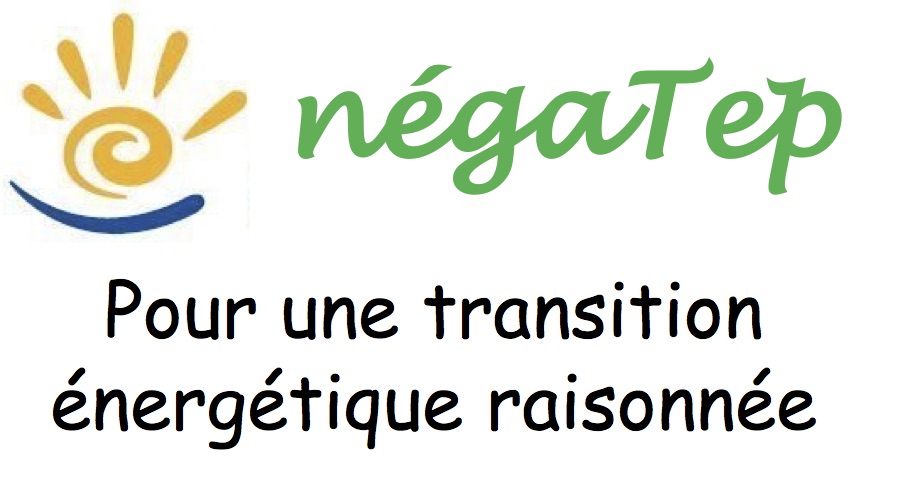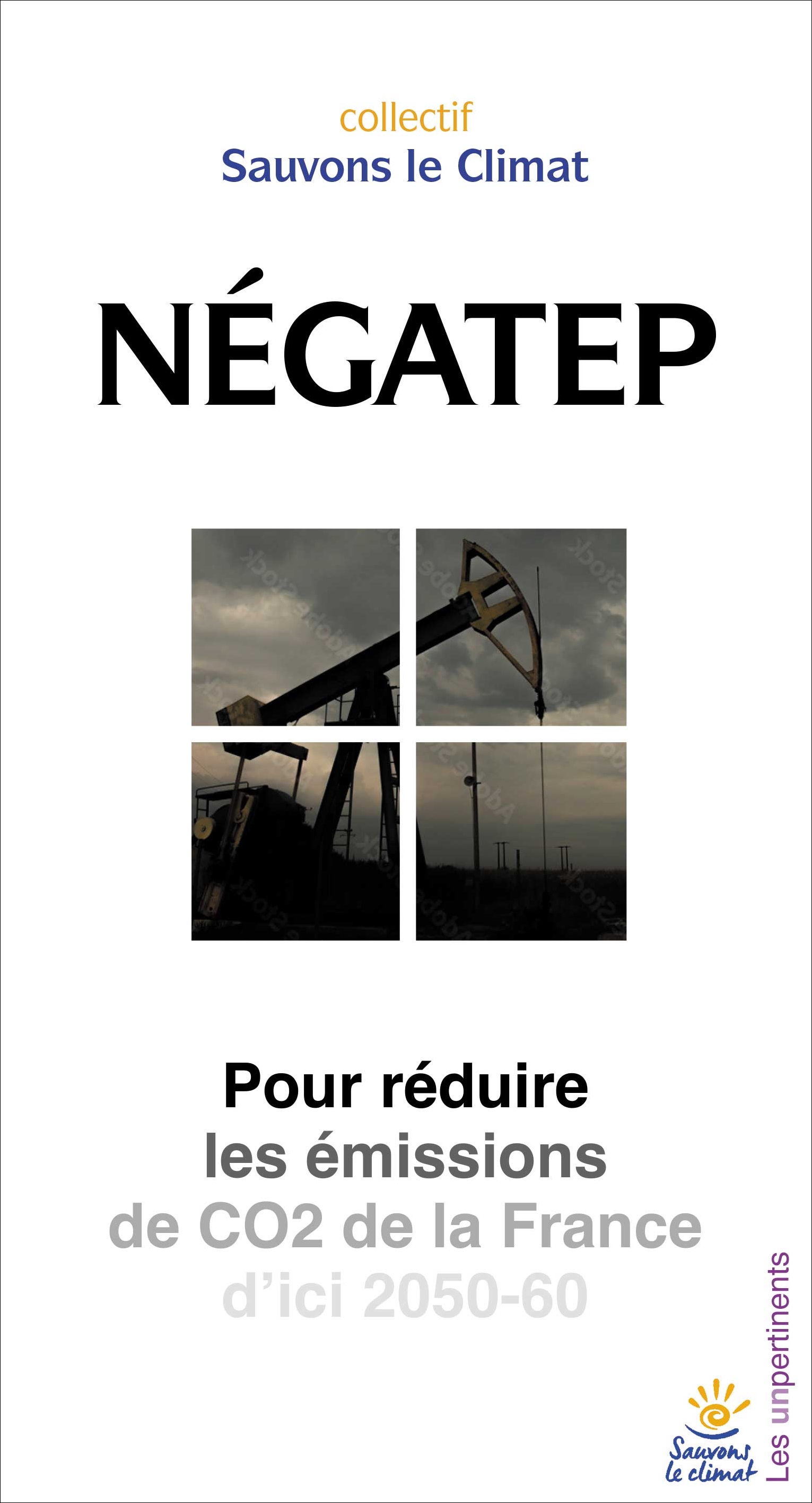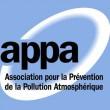André BERGER - Université catholique de Louvain, Institut d'Astronomie et de Géophysique G.Lemaître, 2 chemin du cyclotron, B-1348 Louvain-la-Neuve, Belgique : The climate of the XXIst century : what we know and what we do not know
Abstract. Observations clearly show a significant warming over the whole XXth century. This warming has reached about 1°C in 1998, the warmest year ever observed over the last 1000 years. In parallel, CO2 has increased from 280 to 377 ppmv (reached in 2004) since the Industrial Revolution, at a rate 100 times faster than over the last 20 000 years. Models and statistical analysis show that there is a very high probability that the warming of the last decades result from greenhouse gas (GHG) concentration increase. Before, solar activity, volcanic activity and natural variability of the climate system itself resulting from ocean ? atmosphere ? sea-ice interactions are playing an important role in the interannual to decadal variability of climate. Uncertainties in the explanation of the XXth century global warming still exist related mainly to clouds, the hydrological cycle, the oceanic circulation, the chemistry and the greenhouse gas cycle. But comparison of model results with present-day climatic observations and past climate reconstructions allows to conclude that the models capture relatively well both the natural climatic variations and the impact of man ?s activities on climate (GHG and aerosols). This makes possible to draw conclusions from modeling results obtained for the next century. The globally averaged surface temperature is projected to increase by 1.4 to 5.8°C over the period 1990 to 2100 and sea level to rise by 9 to 88 cm for the full range of the IPCC scenarios.
1. TEMPERATURE OVER THE GLOBE DURING LAST 1000 YEARS
Worldwide temperature measurements carefully screened for instrumental and measurement artifacts, such as effects of urbanization, have been used to estimate that global mean annual surface temperatures have increased by about 0.8°C during the last 150 years (Fig. 1). 1998 has been the warmest year since we have meteorological observations over the Earth. The six warmest years were 1998 (+0.59°C above the 1961-1990 mean), 2002 (+0.47°C), 2003 (+0.47°C), 2004 (+0.45°C), 2001 (+0.43°C), 1997 (+0.43°C), The 1990s were the warmest decade since instrumental measurements started in the 1860 ?s. 1998 is also the warmest year over the last 1200 years (Mann et al., 1998) and the XXth century the warmest century in the last 1000 years (Pollack et al., 1998).
However, it must be stressed that this warming has not been monotonic, with interannual fluctuations in the global annual mean temperature equal to an appreciable fraction of the overall rise over this time period. Moreover, this kind of warming is far from being uniform over the whole globe (Henson, 1999 ; WMO, 1999a). This heterogeneity of the individual observations complicate therefore seriously the detection of any climatic trend or change.
Contact forum : Geodesy and Geophysics for the Third Millennium in Belgium. CNBGG and Royal Academies for Sciences, Letters and Arts in Belgium, Academy Palace, Brussels, October 13, 2005. Mise à jour : 6/09/2005 - updated : 09/06/2005
It has been argued for a while that the global warming was an artifact related to the quality and representativity of the surface observations themselves because satellite data which have a more global character did not show the same trend. This is not the case anymore since it has been discovered that the drift of the satellites themselves bias the satellite data. Satellites data were indeed suggesting that the Earth ?s lower atmosphere was cooling since 1979. But atmospheric friction drags the satellites down and these orbit changes alter the angles at which the satellites view the atmosphere. Taking this drift of the satellite into account actually changes the cooling into a warming trends of 0.07°C per decade, in close agreement with greenhouse warming models and surface observations (Wentz and Schabel, 1998).
2. SEA LEVEL RISE
During the XXth century, sea level has risen by 20 cm. This rise of 2 mm/year in average has however increased to 3 mm/year over the last decade. This is mainly due to the thermal expansion of the ocean which is responsible for 1.8 mm/year. The 1.2 mm/year left are due to the melting of the continental glaciers (0.5 mm/yr), of Greenland (0.15 mm/yr), of Western Antarctica (2±0.5 mm/yr), but also to the increasing use of continental underground water (0.15 mm/yr).
Moreover, the Arctic ice is thinning and melting quite significantly. Covering 13 millions of km2 in 1978, it has been reduced by about 1 million km2 over the last 15 years.
3. GREENHOUSE GASES INCREASE SINCE THE INDUSTRIAL REVOLUTION
Observations at Mauna Loa Observatory, Hawaï, since 1958 show CO2 has steadily increased from 315 ppmv in 1958 to 377.4 ppmv in 2004 (Fig. 2 ; Keeling and Whorf, 2002 and update ). It must also be stressed that the rate of change has accelerated over the last 5 years : from 2000 to 2001, the increase has been 1.5 ppmv. It reached then 2 to 2.5 ppmv before coming back to 1.8 from 2003 to 2004. In addition, analysis of the air bubbles trapped in the ice of Greenland and Antarctica shows that atmospheric CO2 concentration was 280 ppmv roughly 200 years ago (before the Industrial Revolution) and ? 200 ppmv at the Last Glacial maximum (20,000 years ago). Under the pressure of man, CO2 has therefore increased 100 times faster over the last 200 years than it did naturally over the last 20,000 years. Over the last 4 glacial-interglacial cycles CO2 and temperature vary more or less in phase. At these time scales, CO2 is a feedback in the climate system and the exact phase relationship between CO2 and temperature seems not to be constant with time (Petit et al., 1999). This is confirmed by the most recent EPICA record which covers the last 850 000 years (EPICA, 2004).
The rapid increase of CO2 concentration since the onset of industrialisation has followed closely the increase in CO2 emissions from fossil fuels which reaches now almost 6 GtC, upon which 2 from deforestation and soil management must be added. The relationship between CO2-emission and CO2-concentration is pretty well established owing to measurement of the isotopes 13C and 14C in CO2. The isotopic fractionation of 13C versus 12C in the continental biosphere allows to identify the biospheric impact of CO2 on the atmosphere and the decay of 14C the fossil fuel contribution. Moreover, highly accurate measurements of the oxygen concentration in the atmosphere ( ? 210 000 ppmv) show that it decreases by an amount of ? 3 ppmv per year, just what is needed to oxydize the annual amount of C injected into the atmosphere by man ?s activities.
Other gases (CH4, N2O, O3, CFC ?s) show a similar increase with a clear leveling of the CFC ?s concentration related to the application of the Montreal Protocole (but with a phase lack due to the life time of these gases).
4. THE GREENHOUSE EFFECT
Theses gases are called greenhouse gases because they absorb the infrared radiation emitted by the surface of the Earth and the atmosphere and so, participate to the greenhouse effect. If the atmosphere would not be present, the effective temperature at the Earth ?s surface would be ?18°C (it is presently ? 15°C).
Present-day observations show that the solar net input is indeed 237 Wm-2 (342 from the solar constant minus 105 from the albedo). Since the surface emits 390 Wm-2 and since 237 Wm-2 must be returned to space for equilibrium, there is a trapping of 390 ? 237 = 153 Wm-2. This is materialising the greenhouse effect which is characteristic of atmospheres where greenhouse gases are present (for the Earth : water vapor, CO2, methane, ?) and where atmospheric temperature decreases with height. More GHG means more trapping (this is called the infrared forcing leading to the intensification of the greenhouse effect). Following such an intensification, the radiative equilibrium at the top of the atmosphere is therefore temporarily broken, and must be restored by a global increase of temperature (the so-called response of the atmosphere through the Stefan-Boltzmann law). This response includes the feedbacks and leads, in particular, to a warming at the surface. By how much remains a difficult problem to answer, especially at the local scale.
The radiative forcing due to the different chemical compounds in the atmosphere since the industrial revolution amounts to 2.5 Wm-2 for the GHG. Comparing the relative role of these GHG on the global warming, one can see hat CO2 represents about 50 % of the intensification of the greenhouse effect. Solar activity and volcanic activity play definitely a much less important role over the last 40 years. The direct effect of sulfates and biomass burning is slightly reduced by black carbon absorption leading to a net value of ? - 0.5 Wm-2. If the effect of land-use changes and the indirect effect due to changes in both cloud albedo and lifetime is included, the global mean cooling relative to pre-industrial times reaches less than 1 Wm-2,slightly less than estimated from previous, not fully interactive, experiments.
5. MODELING CLIMATIC CHANGE
Although deficiencies remain, models allow now to quantify the contribution of individual factors on the climatic variations of the last 150 years (Bertrand et al., 1999). If solar and volcanic activities are used as natural forcings and GHG and aerosols as contributions from man ?s activities, it becomes accepted that the natural factors explain a large part of climate change up to the mid 1950 ?s. For the most recent warming, GHG are absolutely requested to explain the climatic trend, with aerosols reducing slightly the GHG warming (Mitchell et al., 1995 ; Haywood et al., 1997).
The phenomena with the greatest potential for explaining the variability over tens of years are the El Niño ? Southern oscillation, the atmosphere and ocean interactions in the Pacific and North America, the North Atlantic oscillation and the global ocean circulation. Of concern to Europe is the possibility of abrupt changes in the North Atlantic and consequent extreme climate change. In particular, the El Niño of 1997-98 (the most intense of the century) has undoubtedly contributed to the exceptional 1998 temperature record. By December 1997 sea-surface temperature anomalies exceeded 3°C over a large area of the eastern tropical Pacific, with anomalies exceeding 5°C locally. This El Niño episode, one of the strongest in the historical record, prevailed into early May 1998 and then gave way to La Niña conditions for the rest of the year (WMO, 1999b), continuing through 1999.
6. SCENARIOS FOR THE FUTURE CENTURY TEMPERATURE
Scenarios have been constructed under the Intergovernmental Panel on Climate Change. The most recent ones are the SRES scenarios of the Third Assessment Report (Houghton et al., 2001). These scenarios of CO2 (or other pollutants) are based upon a formula which involves three main factors : the CO2 amount produced by technology, the number of technologies by inhabitant and the total population.
We were slightly more than 1 billion inhabitants at the turn of the century, 2.5 in 1950, 5 in 1985 and 6 in 1999. UN predicts (out of any natural and man-made cataclysm) 10 billions of inhabitants by the end of the XXIst century, 8.5 billion in the developing countries and 1.5 in the industrialised ones.
Most of the emission scenarios (Fig. 3a for CO2) extend to the year 2100 and include emissions of CO2, CH4, N2O, the halocarbons, precursors of tropospheric ozone, sulfate aerosols and aerosols from biomass burning. For the Business-as-usual scenario, the rate of increase of equivalent CO2 is about 0.8%/yr during the 21st century. Depending upon the kind of development, CO2 emissions in 2100 will vary between 5 and 35 GtC/year, although it has just been recognised that limiting the scenarios to these values is biasing the predictions. As a consequence, the IPCC has come up with a total of 40 new scenarios constructed around four equally realistic futures. The central scenarios from each of those provide a range of 6 to 29 GtC annually. There will be no best guess anymore and the new analyses extend the range significantly toward higher emissions.
The traditional IPCC resulting atmospheric CO2 concentrations (Fig. 3b) are calculated using the Bern carbon cycle model and the carbon budget for the 1980s. This leads to a range of values extending from 540 to 970 ppmv, with the Business-as-Usual reaching 700 ppmv.
The radiative forcing is dependent on the concentration of the gases and the strength with which they absorb and re-emit long-wave radiations. For sulfate aerosols, the direct and indirect radiative forcings are now included. For the B-a-U scenario the largest contribution comes from CO2 with almost 6 Wm-2 by 2100. The total non-CO2 trace gases amounts to ? 3 Wm-2 of which 1 is from CH4. For the full range of IPCC-SRES scenarios, the globally averaged surface temperature is projected to increase by 1.4 to 5.8°C over the period 1990 to 2100 (Fig. 3c). These projections are greater than those in the Second Assessment Report (IPCC, 1995), due primarily to the lower projected SO2 emissions in he SRES scenarios.
7. IMPACT ON SEA LEVEL, PRECIPITATION AND EXTREME EVENTS
Projections of global average sea level rise from 1990 to 2100 for the full set of SRES scenarios lie in the range 0.09 to 0.88 m (Fig. 3d). The central value is 0.48 m which corresponds to an average rate of about two to four times the rate over the 20th century.
The largest term of sea-level rise derives from the expansion of ocean water as it warms up ; the melting of mountain glaciers mostly in high northern latitudes contributes about half as much. In these projections, the combined contributions of the Greenland and Antarctica ice sheets are projected to be relatively minor over the next century with a possible negative contribution from increased accumulation of snow over the Antarctic ice sheet. However, recent results lead to assume that the western Antarctic Ice Sheet may eventually collapse, even regardless of human impacts on climate (Conway et al., 1999).
The warming of the ocean leads to an increase in thermal expansion of sea water which does not occur uniformly. By 2100, it varies from 0 around parts of Antarctica to over 60 cm in parts of the northern oceans. In practice, it is not the change in mean sea level that is of concern, but the effect on extremes occuring during storm surges for example. It is estimated that by the mid-21st century, a 1-in 100-year storm surge at some North Sea parts could occur in average once every 20 years as a consequence of a 31 cm sea-level rise.
Globally averaged water vapour, evaporation and precipitation are projected to increase. At the regional scales, both increases and decreases are seen. As far as extremes are concerned, more hot days and heat waves are very likely over nearly all land areas. Increase ?daily minimum temperature are projected to occur over nearly all land areas and are generally larger where snow and ice retreat. Frost days and cold waves are very likely to become fewer. Precipitation extremes are projected to increase more than the mean and more intense precipitation events are very likely to occur over most areas. There is projected to be a general drying of the mid-continental areas during summer.
8. THERMOHALINE CIRCULATION IN THE NORTH ATLANTIC
Most climate models indicate that increases in greenhouse gases can lead to a slowing down or collapse of the deep-ocean circulation which brings warm salty water into the north-eastern Atlantic (the thermohaline circulation, Manabe and Stouffer, 1999a,b). It has been speculated that such changes could lead to a local cooling over Europa, even if the globe as a whole gets warmer. However, in a HadCM3 model experiment using non-interventionist GHG emissions leading up to 4 times the present-day emissions within 70 years, the thermohaline circulation slows down, but does not collapse, nor does the climate of Europe get colder. A similar result has been obtained at the Max-Planck Institute for Meteorology in Hamburg (Latif and Roeckner, 1999). Using the B-a-U scenario, the thermohaline circulation remains stable due to anomalous high salinities in the tropical Atlantic advected into the North Atlantic ocean sinking region, thereby compensating the effects of the local warming and freshening.
9. UNCERTAINTIES
Uncertainties are present in each step of the modeling chain from emissions of greenhouse gases and aerosols, to the impacts that they have on the climate system and society. Many factors continue to limit the ability to detect, attribute, and understand current climate change in details and to project what regional future climate changes may be. Further work is therefore needed in the following areas :
1.
Arrest the decline of observational networks in many parts of the world ; 2.
Expand the observational foundation for climate studies to provide accurate, long-term data with expanded temporal and spatial coverage ; 3.
Estimate better future emissions and concentrations of greenhouse gases and aerosols ; 4.
Understand and characterise more completely dominant processes (e.g., ocean mixing) and feedbacks (e.g., from clouds and sea ice) ; 5.
Address more completely patterns of long-term climate variability ; 6.
Explore more fully the probabilisitic character of future climate states by developing multiple ensembles of model calculations ; 7.
Improve the integrated hierarchy of global and regional climate models with emphasis on improving the simulation of regional impacts and extreme weather events ; 8.
Link more formally physical climate-biogeochemical models with models of the human system and thereby provide the basis for expanded exploration of possible cause-effect-cause patterns linking human and non-human components of the Earth system ; 9.
Link more formally physical climate-biogeochemical models with models of the human system and thereby provide the basis for expanded exploration of possible cause-effect-cause patterns linking human and non-human components of the Earth system ;
10. POLICY OF CO2 REDUCTION
One of the issues facing policy makers is the effectiveness of scenarios. Although it seems already very difficult to implement policies leading to a reduction of 5% in the emissions of the industrialised countries by the year 2010-2012, the scientific community suggests much stronger involvement with the stabilisation scenarios. A recent model experiment showed that a scenario which leads to a stabilisation of CO2 levels at 550 ppmv by the end of the next century (which otherwise would be reached by 2040) reduces the global mean warming between the present-day and 2100 by about 2°C. The change in sea level due to thermal expansion is also reduced, but the sea level is still increasing at 6 cm per century at 2250 with little sign of remission.
Clearly for reaching such a goal, we must be very careful about the implementation of voluntary policies aiming to reduce seriously and rapidly the GHG emissions. The stabilisation at the 550 ppmv level which, in any case, will not be reached before the first half of the 22d century, requires a maximum emission of 7 GtC per year not to be exceeded during the first half of the 21st century and a progressive decrease during the second half before a rapid decline which must start during the last decades of the 21st century at the latest. In order to meet such a challenge, we must be very careful in the policy we are implementing now, because of the long time lag between the moment the decision is taken and its effect on environment. The Kyoto target seems, in such a framework, absurdly low, although the recent emission data from the members of the European Union, the most voluntary countries for executing the Kyoto Protocole, already appears to be almost impossible to be met in due time.
EU-15, owing to its target of reducing its emissions by 8% in 2010 relatively to the 1990 levels, will have difficulties to keep its promise. In 2002, their global emission was 1.9 points above the hypothetical linear path between base-year emissions and the burden-sharing target for 2010. Forecast for 2010 show a shortfall of 1 to 8 points. Only Sweden and United Kingdom seem to be in a position to reach and even make better than their target. For the 10 new members, the economic and industrial situation explains that their emissions are 23 percent less in 2002 than in the 1990’s. Globally EU-25 have therefore reduced their emissions by 7% in 2002, slightly more than the linear Kyoto target. However, the revival of economy in the 10 new member states leads to forecast a reduction of the global EU-25 emission of 2.3% only, missing the target by more than 5%. Only a policy of a more rational use of energy and a return to more nuclear energy would allow EU-25 to reach its Kyoto burding sharing target.
In Belgium, the CO2-emissions went from 118 in 1990 to 127 Mt in 2002. Taking into account all GHG, the CO2equivalent emissions have risen by 3% instead of decreasing by 4.5% (the burden-sharing target of Belgium in the Kyoto Protocol is 7.5% by 2010 s compared to 1990, it means a reduction of 11 Mt over the 146 Mt emitted in 1990). For Belgium (and several other member states), the savings identified from planned domestic policies and measures are not sufficient to achieve their burden-sharing targets. Forecast shows a shortfall between 13 and 23 points based respectively on additional or existing domestic policies and measures (19 to 33 Mt above our target !). The following scenario, more than optimistic, shows how much the present-day policy of nuclear power plant shut down and wind energy promotion is going against the stream.
Let us assume indeed that :
1.
the emissions of GHG other than CO2 and emissions of CO2 from the sectors other than electricity keep their 1990 levels (over optimistic as the road transport is forecast to increase by 33% within the next 5 years) ;
2.
the electricity demand increases only by 10% from 1998 to 2010 (some people think it might double) ;
3.
renewable sources of energy would produce 10% of the electricity consumption (this represents 2540 wind turbines of 1.5 MW each) ;
4.
the thermal power plants emit only 400 gCO2/kwhe (at the present-day it is 800).
In such conditions, if Kyoto must be met, 43% of the 91,5 TWhe requested to be delivered in 2010 in Belgium must be found. The solutions are : nuclear power plants, or lying at nuclear energy providers’mercy (France, for example), or allowing to be over our target of 135 MtCO2eq by 15.7 Mt which represents a shortfall of 18.2 points.
But are the wind turbines a solution ? My answer is no, because they produce electricity only 6.5h/day in average and therefore need in parallel to be supplied by a thermal power plant of equivalent nominal power (the nuclear power plants do not need wind turbines to supply part of their electricity production. In other words it is pure waste willing to reduce the electricity production of a nuclear power plant in order to let the wind turbines running when the wind authorises). Let us analyse what would happen if wind turbines would produce the electricity equivalent of a nuclear power plant of 0.83 GW. 553 wind turbines of 1.5 MW each would be needed producing a total of 1.97 TWh. A topping-up thermal power plant of 830 MW would then be necessary to provide, in case they are in rest, the electricity normally expected to be provided by the wind turbines. This would give 5.3 TWh and emit 4.24 MtCO2 (at the present rate of emission of 800 gCO2/kWhe). Total electricity produced would be 7.27 TWh. With the present-day situation this would produce only 2.62 MtCO2, it means 1.62 MtCO2 less than the wind turbine solution (or 62% of it).
Some raise as an objection that the CO2 emissions from the electricity sector represent only 21% of the total CO2 emission and, therefore, that the wind turbines solution will only bring a few percent more. It is true, but these are a few percent too much in a country which is far from being able to meet his Kyoto target. Others claim also that wind from other regions might supply the demand in regions where the turbines are temporarily not allowed to work. All right, but who is going to provide electricity to the regions where the wind turbines run !
As long as the discussions will continue without significant actions to be taken, pollution will continue. The penetration time of new technologies and the response time of the climate system being decades, it is hopeless to think that we can avoid, at least, some impacts due to global warming. It is therefore urgent that we start to think adapting to the new climatic situation. It is more than urgent to get ready for it.
11. CONCLUSION
It is remarkable to see the quite rapid improvement in the scientific understanding of global climate changes over the last decade. In its second assessment in 1995, the Intergovernmental Panel on Climate Change says that the "balance of evidence suggests a discernable human influence on global climate". In its third assessment report in 2001, we find : "an increasing body of observations gives a collective picture of a warming world and other changes in the climate system" and also "there is new and stronger evidence that most of the warming observed over the last 50 years is attributable to human activities". Moreover, IPCC does not hesitate to declare that "the climate is expected to continue to change in the future", the range of expected warming relative to 1990 being 1.4 to 5.8°C.
Just to give an idea of what might happen in the next future, let us look to China and its development. At the present, the emission of CO2 is about 1 tC per inhabitant per year. If we assume that China will reach the Belgian level of emissions (3 tC per inhabitant per year), its population of 1.3 billion inhabitants would increase the global world emissions by 2.6 GtC per year, it means an increase of 33 % !
As a consequence, I am deeply convinced that policies to slow down the global warming (or to prevent it if ever possible !) must be accompanied as soon as possible by policies to adapt to such a severe change in our environment and climate. More research needs to be done not only to improve our understanding of the global climate, but also to simulate the impacts of climate change at the regional scale, including the probability of extreme events and their possible intensification (hurricane, tornados, storms, floods, drought ?). In parallel, teaching climate and global change is urgently needed to make the young generations aware of the problem, expecting that they will be highly concernedd of the gravity of the problem and act for a sustainable world as soon as possible.
REFERENCES
Bertrand C., van Ypersele J.P. and A. Berger, Volcanic and solar impacts on climate since 1700. Climate Dynamics, 15(5) (1999) 355-367.
Conway H., Hall B.L., Denton G.H., Gades A.M., and E.D. Waaddington, Past and future grounding-line retreat of the West Antarctic ice Sheet. Science, 286(5438) (1999) 280-283. EPICA community members, Eight glacial cycles from an Antarctic ice core. Nature, 429(6992) (2004) 623-628.
Hansen J., Mki Sato, Lacis A., Ruedy R., Tegen I., Matthews E., Perspective climate forcings in the industrial era. Proc. Natl. Acad. Sci. 95 (1998) 12753-12758, http://www.giss.nasa.gov/gpol/papers/1998/1998-HansenSatol.pdf
Haywood J.M., Stouffer R.J., Wetherald R.T., Manabe S. and V. Ramaswamy, Transient response of a coupled model to estimated changes in greenhouse gas and sulfate concentrations. Geophysical Research Letters, 24(11) (1997) 1335-1338.
Henson R., Hot, Hot, Hottest, 1998 raised the bar for global temperature leaps. Weatherwise, March/April (1999) 34-37.
Houghton J.T., Meira Filho L.G., Callander B.A., Harris N., Kattenberg A. and K. Maskell, Climate Change 1995 : The Science of Climate Change. (Intergovernmental Panel on Climate Change, Cambridge University Press, 1996) 572p.
Houghton J.T., Ding Y., Griggs D.J., Noguer M., van der Linden P.J., Dai X., and C.A. Johnsen (eds), Climate Change 2001 : The Scientific Basis. Contribution of Working Group I to the Third Assessment Report of the Intergovernmental Panel on Climate Change. Cambridge University Press (2001), (x + 881 pages).
IPCC, Climate Change 1995. The Science of Climate Change. Summary for Policymakers and technical Summary of the Working Group I Report. Intergovernmental Panel on Climate Change. (World Meteorological Organisation and United Nations Environmental Programme. Geneva, 1995).
Jones P.D., New M., Parker D.E., Martin S. And G. Rigor, Surface air temperature and its changes over the past 150 years. Reviews of Geophysics, 37(2) (1999) 173-199.
Jones P.D. and J. Palutikof, Global Temperature Record. Climate Research Unit, Information Sheets, http://www.cru.uea.ac.uk/cru/info/warming (2005).
Keeling C.D. and T.P. Whorf, Atmospheric CO2 records from sites in the SIO air sampling network. In : Trends : A Compendium of Data on Global Change. (Oak Ridge, Tennessee : Carbon Dioxide Information Analysis Center, Oak Ridge National Laboratory, 2005).
Latif M., Roeckner E., Tropical stabilisation of the Thermohaline Circulation in a Greenhouse Warming Simulation. (Max-Planck Institut für Meteorologie, Report n° 299, Hamburg, 1999).
Mann M.E., Bradley R.S. and M.K. Hughes, Northern Hemisphere temperatures during the past millennium : inferences, uncertainties, and limitations. Geophysical Research Letters, 26(6) (1999) 759-762.
Manabe S., Stouffer R.J., Are two modes of thermohaline circulation stable ? Tellus, 51A (1999) 400-411.
Manabe S., Stouffer R.J., The role of thermohaline circulation in climate. Tellus, 51A-B (1999) 91-109.
Mitchell J.F.B., Johns T.C., Gregory J.M. and S.F.B. Tett, Climate response to increasing levels of greenhouse gases and sulphate aerosols. Nature, 376(6540) (1995) 501-504.
Petit J.R., Basile I., Leruyuet A., Raynaud D., Lorius C., Jouzel J., Stievenard M., Lipenkov V.Y., Barkov N.I., Kudryashov B.B., Davis M., Saltzman E. and V. Kotlyakov, Four climate cycles in Vostok ice core. Nature, 387(6631) (1997) 359-360.
Pollack H.N., Huang S. and P.Y. Shen, Climate change record in subsurface temperatures : a global perspective. Science, 282 (1998) 279-281.
Wentz F.J., Schabel M., Effects of orbital decay on satellite-derived lower-troposheric temperature trends. Nature, 394(6694) (1998) 661-664.
WMO, WMO statement on the status of the global climate in 1998. WMO n° 896, (World Meteorological Organization, Geneva, 1999a).
WMO, 1999 closes the warmest decade and warmest century of the last millennium. WMO Annual Statement on the Global Climate (www.wmo.ch/web/press/press644.html) (1999b).

Figure 1. Annual combined land surface and sea surface temperature anomalies for the period 1860-2004 with respect to the average 1961-1990 (Jones and Palutikof, 2005).
Back to text

Figure 2. Carbon dioxyde atmospheric concentration between 1958 and 2004 at Mauna Loa Observatory, Hawaï (Keeling and Whorf, 2005).
Back to text

Figures 3. IPCC-SRES (2001) scenarios for (a) anthropogenic CO2 emissions, (b) CO2 concentrations, (c) SO2 emissions, (d) global temperature change and (e) global sea-level change (Houghton et al., 2001).
Back to text















